Welcome to Nepal’s super and mystical Himalayan land. You may understand that Nepal is a reality while heaven is a fantasy when you arrive. These peaks grant you the bravery and dedication to climb somewhere. Nepal Peak Climbing will be infused with extraordinarily extreme thrills thanks to the pleasant ambient and icy surroundings. These ethereal heights will transcend you to any other realm.
Furthermore, Peak Climbing in Nepal enhances your physiological, intellectual, and non secular fitness. You will eat all of these sky-touching peaks’ energies. The insanity you will stumble upon in this Himalayan will be incredible.
Nepal has eight of the world’s tallest summits. Contemplate how many peaks and ranges you will be climbing in Nepal. In particular, what you may expect when climbing is smooth. Snowy woodlands, glaciers, panoramas, friendly climbers, movements, and historical and conscientious communities will captivate you.
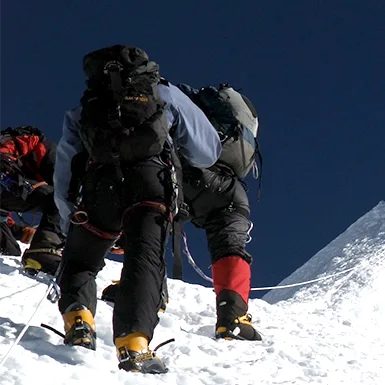
Chulu Far East Peak Climbing
Trip Difficulty: Tough
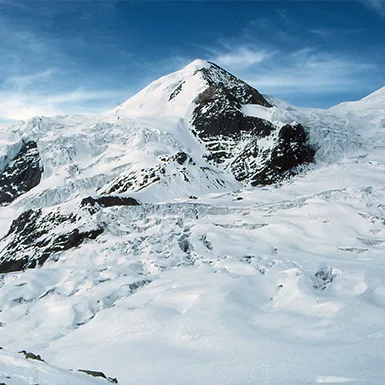
Chulu East Peak Climbing
Trip Difficulty: Tough
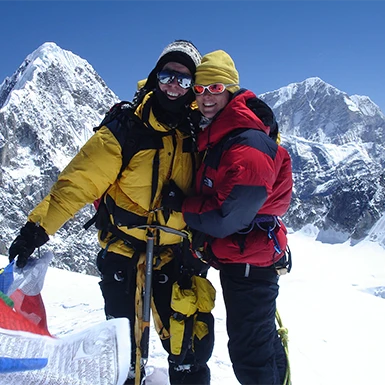
Ramdung Peak Climbing
Trip Difficulty: Difficlut
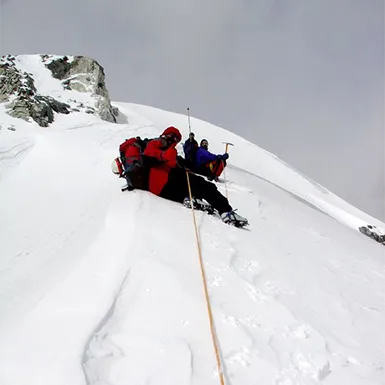
Pokalde Peak Climbing
Trip Difficulty: Difficlut
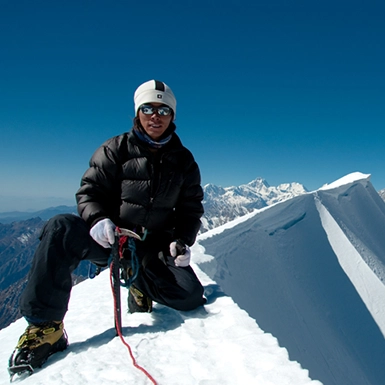
Paldor Peak Climbing
Trip Difficulty: Difficlut
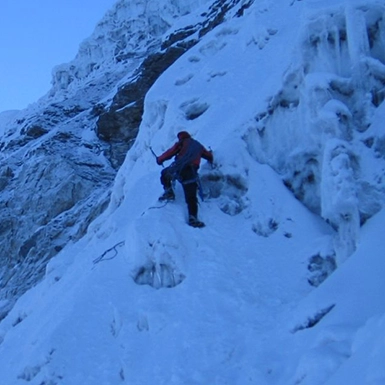
Ombigaichen Peak Climbing
Trip Difficulty: Difficlut
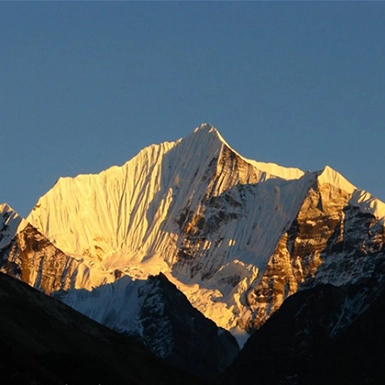
Yubra Himal Peak Climbing
Trip Difficulty: Difficlut
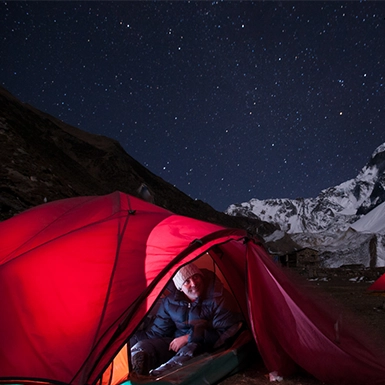
Samdo Peak Climbing
Trip Difficulty: Difficlut
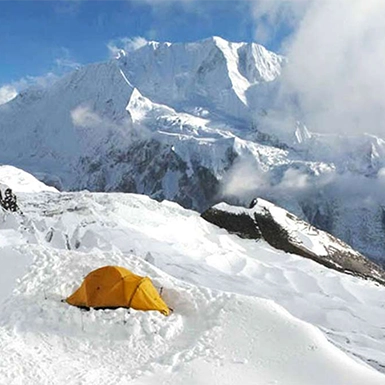
Kwangde Peak Climbing
Trip Difficulty: Difficlut
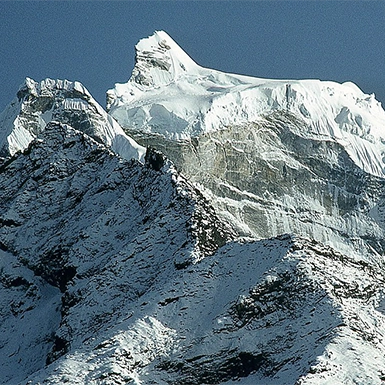
Kangtega Peak Climbing
Trip Difficulty: Tough
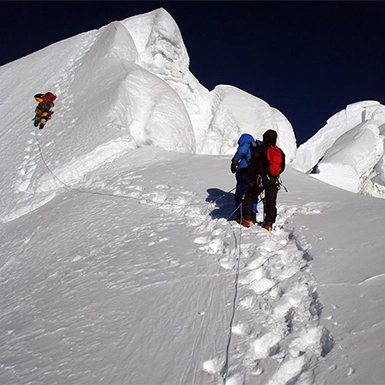
Bokta Peak Climbing
Trip Difficulty: Difficult
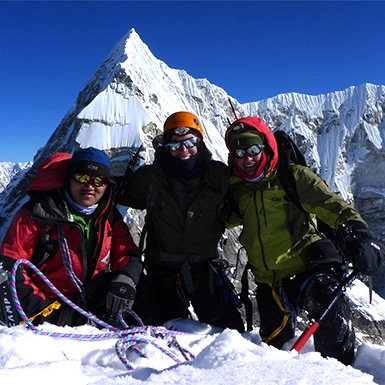
Pachermo Peak Climbing
Trip Difficulty: Difficult
Moreover, the time you spend here on your vacation will be precious. In addition, there are far more than 20 to 30 elevations to climb, including Mount Everest, the world’s highest Peak. Why wonder about floating above the clouds when you can soar over the tallest mountain? The grandeur of Nepal is evident in the excellent climate and the juxtaposition of verdant hillsides. Climbing in Nepal is akin to attempting to open the gates of paradise.
The gorgeous mountain range stretching east to west across Nepal conveys the appearance of being in a fairytale world. Remarkable adventures watch for you in this perfect sanctuary while mountaineering in Nepal. The fauna and foliage you will see while mountain climbing throughout Nepal’s slopes are unique. Summertime guests, monsoon calm, autumn tenderness, and iciness tranquil snow will carry you closer to another dimension.
Likewise, distinct climbers and walkers have ambivalent ideas about Nepal. Being a professional traveler, you must visit Nepal at least once. You will become more aware as you become more enthusiastic about several views during peak climbing.
Nobody knows how you are capable of overcoming these enormous mountains. Overall, Nepal has the most incredible mountaineering conditions. Overall, interacting with the best natural treasures makes us feel good. The melancholy sensation you’ll get from this beautiful country will be intense. The significant characteristic is encountering so many natural resources while climbing.
Likewise, streams and creeks are also popular attractions. The ethnic groups usually embrace you with a gentle smiley face. Climbing will be the most extraordinary experience of your life. Regardless, you should at least get a taste of this sacred land.
Mountaineering in Nepal provides a life-changing experience. You’ll gather all the information and talents you acquired in Nepal. Furthermore, the conveniences of everything will make you feel at ease. When fear and confidence collide, you become stronger. The freshness of the Himalayas will infuse your soul with new light, and Climbing in Nepal will be worthwhile.
Nepal Peak Climbing Packages
Island Peak Climbing
The unique Peak of Nepal’s Everest region is Island Peak (5100m). The island peak is typified by the eastern and lower slopes of Lhotse, which is visible as an island on the trek to Everest base camp. Additionally, in 1953, some British Climbers gave this Peak the name.
Moreover, this summit has attributes similar to those at the EBC camp. Even well-known personalities such as Tenzing Norgay Sherpa have visited. This Peak is easy to climb but is gorgeous, providing the best feeling of Climbing in Nepal.
Consequently, gaining the summit of this Peak is simple. Based on the weather, it may be more challenging at times. This mountain resembles an entirely other image of the EBC camp.
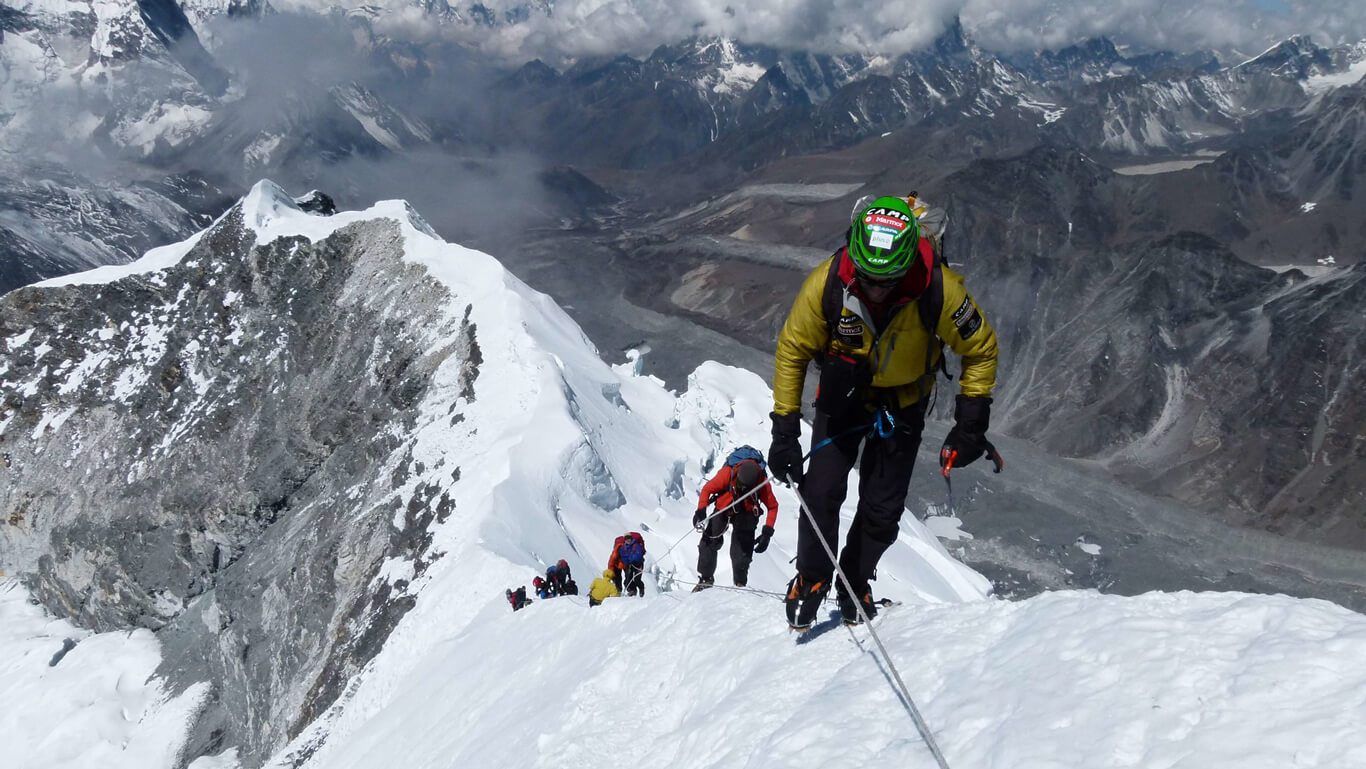
How to get it?
This is the ideal Peak to climb because it will take you to distinct greenery and geological areas. Nevertheless, this peak’s peacefulness is analogous to other East Nepalese summits.
Conversely, the eastern crest exhibits the same attributes as the others. After traversing through some settlements, you will reach this island peak after moving south from Kalla Patthar (5400m).
Why is island peak considered one of the best peaks to climb?
Moreover, climbing through the steep hills and slick slopes is risky. This Peak has the stunning impression of a mountainside and lush hills intertwined. The exhilarating vista from here will be incredible. Correspondingly, the wonderful sensation you would receive after climbing this summit.
You could see Mount Everest, Ama Dablam, and Lhotse, among other mountains. Likewise, this Peak has several casualties. Altitude sickness plagued some of the climbers. It cannot be accessible at times due to the sharp boulders on the apex of this island peak.
Moreover, difficulties arise when attempting to climb this Peak without prior knowledge. Porters and guides are indispensable. Similarly, the monsoon season takes you to the test. Climbing this summit during the annual rainfall is difficult due to falling debris and stones from above.
Furthermore, Slippery slopes can make it challenging to trek. As a result, following the EBC camp, you can head to some villages before climbing Island Peak. Conversely, the magnificence of this consciousness peak seems beyond words.
Meanwhile, you will be resting in the lap of the world’s tallest mountain, delighting in the cinematic scenery. You will also be able to ascertain different tactics and civilizations from the people that live in the eastern mountains.
Additionally, as you begin climbing this majestic Island peak, you will be lost throughout the reverberation.
Mera Peak Climbing
At 6476 meters, the Mera Peak climbing Nepal is another peak in the Everest Region. Consequently, the brilliance of this peak-peak is seen across Nepal’s eastern region. The scenic habitat attracts climbers and vacationers from all over the world.
Likewise, this peakPeakdeemed one of the most prominent after the Island Peak. It would help if you trekked through the Everest Region’s Hinku Village to ascend this peakPeake form, foliage, and inhabitants are the most fantastic, mind-blowing attractions.
Consequently, reaching Nepal’s adventurous and remarkable peakPeaknot difficult. There won’t be any difficulties in climbing this beautiful peakPeakt sometimes; it might be a problem due to bad weather conditions.
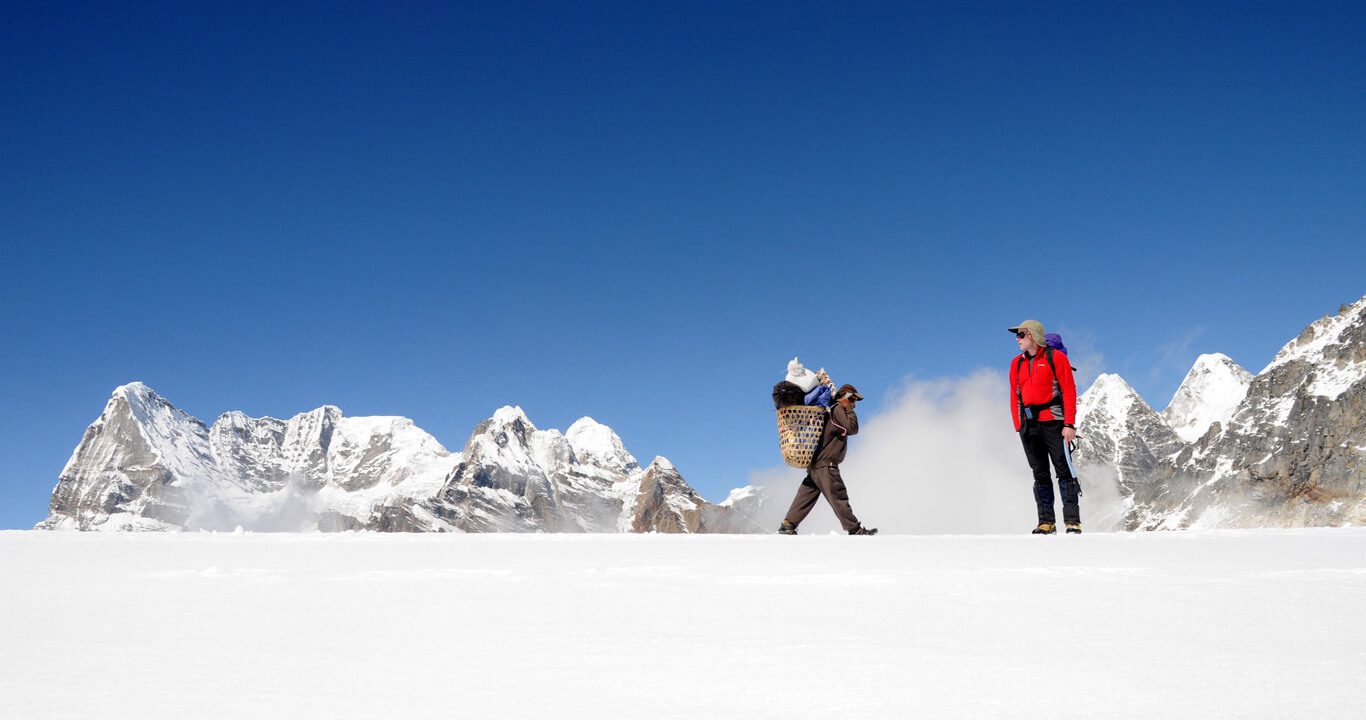
How to get it?
Your first destination will be a flight to Lukla from Kathmandu. Likewise, you can ascend Mera Peak by following the EBC route and selecting the correct trial. Altitude sickness could be a concern because it is over 6000m above mean sea level.
Furthermore, reaching the mountaintop feels like hitting the top of the world. On the crest, several ranges may be visible. Some of the mountains seen from Meeru Peak include Kanchenjunga, Everest, Lhotse, and Cho you.
Nevertheless, tackling this mountain will be simple after ascending EBC. The only difference between it and the EBC trek is the low-height summit. Furthermore, this peak Peakan intermediate complexity level. Because of the various obstacles, climbing will be incredible. The hillsides are pretty steep, and the cliffs are vulnerable.
Preparation and Training
Any element’s conformance on its preparation. Effective peak climbing necessitates thorough preparation. Before actually contemplating peak climbing, there are various factors to consider. Here are several helpful hints when ascending Mera Peak.
Your physical strength seems to be the most decisive factor in accomplishing Mera Peak Climbing. You should be healthy and fit for this peak Peakhave with a decent resilience rate. As a result, before the ascent, you must prepare yourself. You should enroll in at least a few months of training.
Adventures and Difficulties during Monsoon
Likewise, the snow and shrubs cover the craggy, rough terrain. It will be more fascinating during the monsoon period. The many stances make climbing Mera Peak a little more complex. Furthermore, the peak’Peak’sinence makes it more challenging. It won’t be easy to climb this peak Peakout preceding training and expertise. With the proper cognition, you should be able to ascend this peak Peakkly. Despite the challenges, it is one of the most pleasurable climbs ever.
Pisang Peak
In 1955, a German team became the first to ascend this majestic peak. Peak Annapurna Region’s Pisang peak (6091m) provides a naturally healthy bundle for climbers. Additionally, this summit presents numerous hazardous aspects to climbers.
Moreover, this picturesque peak Peakonvenient for all climbers, from beginners to experts. The enjoyment and sensations you acquire when climbing to this peak are Peakcomparable to the tranquility and tranquility of this peak. Is peak this peak Peakowledged as Nepal’s best peak? Peakause it’s one of the easiest and the most adventurous peaks.
The dynamic location of Pisang Peak reflects the natural portion of Nepal. Furthermore, indigenous ethnic groups known as Sherpa and Gurungs inhabit this peak’Peak’snity. You’ll also be able to learn about a diversity of traditional real-world principles and expertise.
Likewise, a scenic bus ride from Pokhara to Beshi Sahar is required to reach the Pisang summit. You will later be on trial across several communities, such as Chamje. The ambiance and surroundings of the Gurungs and settlements are lovely.
Moreover, you will also be welcomed by the many traditional cultural characteristics. The upper valley of Pisang is accessible by passing through thick woodland. From here, you’ll begin a short ascent to the peak.Peakang Peak Climbing
Geography and natural elements
Witness the splendor seen from above the valley. In addition, you will find this expedition to be relatively simple and enjoyable. This lovely town has yet to be affected by the Urbanization wave. You ponder how such a lovely valley can be so ecologically sustainable.
Likewise, due to its versatile geographical topography, there is also a broad spectrum of flora. Moreover, you will find terraced paddy fields along the lowest portion of the trail. The famous Apple farm in the Manang region is one of the best parts we should not omit on this expedition.
Temples and Monasteries
Also, if the person wants, they can select a tart apple from a tree with their hands. Pisang is a Deity spiritual place. Various monasteries and caverns can be accessed. In the Pisang Valley, there are several other monasteries. Moreover, it is said that the well-known excellent priest came for introspection in some of the nooks and sanctuaries. If you are eager, you can always go to the monasteries and collect graces for a peaceful future.
Seasonal changes
Consequently, the two fundamental phases of spring and autumn, which coincide in April, May, October, and November, escape the pre-monsoon seasons. Moreover, one of the most frequent occupational hazards is terrible weather.
Likewise, you can also plan a trip in the winter season if you are a specialist who wants to take on some hardships.
Lobuche Peak Climbing
Let’s return to the Everest region to see another gorgeous peak. Furthermore, Lobuche Peak is a breathtaking peak 6,119 meters above sea level. The quintessential Everest Trail will take you from Lukla to the picturesque Khumbu Region on your way to ascend to Lobuche Peak.
Moreover, you’ll spend three nights reacclimatize along the way in Namche Bazar, the Sherpa heartland of the region. You will also see spectacular monasteries and panoramic views. You’ll see much foliage as you pass countless more than eight thousand meter summits on the trail. This adventure will be remarkable, and the experiences will last a lifetime.
The Lobuche peak Climbing starts on the typical Everest trail that stretches from Lukla to Everest Base Camp. Namche Bazaar is where you’ll spend the night. This will be vital for adaptation before ascending above 5000m, which will be more strenuous.
Furthermore, you will embark on the trek to the Tengboche and Dingboche hamlets, where you will spend the nights trying to adjust. Similarly, you will ascend to Kala Pathar, 5,645 meters high, after approaching Everest Base Camp. This will be critical recuperation before the Lobuche Peak expedition.
Consequently, you will now head to Lobuche. Here you are, on the summit of Lobuche Peak, enjoying the experience of snapping photographs and spending quality time that will last a century.
Climbing Lobuche Peak provides the most magnificent panorama of the highland terrain and a beautiful vista of snowy mountains. Likewise, it is the primary attraction perspective of Peak Climbing.
Conversely, you can visit remote Sherpa settlements and magnificent Buddhist monasteries throughout your trip here. Furthermore, the summit provides a breathtaking perspective of the neighboring ranges.
Difficulty Level
Peak Climbing in Nepal is not that’s easy. Climbing Lobuche Peak is arduous because the slopes are rugged and rocky. As a result, you must walk from Lukla to Lobuche Base Camp before you may begin ascending to other high elevations.
Consequently, you will need several hours of trekking daily for that climbing portion. The walking trails are not challenging, but they are rough and strenuous. This expedition may pose challenges to those who have never wandered previously.
Also, you can improve your capability of conquering Lobuche Peak through proper training. After crossing through Lobuche village, the trail becomes more intense. As you approach Lobuche Base Camp, the rugged trails get increasingly tricky.
Moreover, the weather at Lobuche Peak is quite challenging. It changes rapidly, sometimes bringing tremendous obstacles to the higher elevation while climbing. Likewise, you can use a weather map radar before climbing this epic peak.Peakmpus Peak Climbing
This magnificent peak, Peakch, stands at 6019 meters and is in the Annapurna Region. The splendor of Dhampus Peak is beyond description. The fantastic view from this mid-western summit is something out of a dream.
Moreover, the spectacular views of the Dhaulagiri and Annapurna mountains will be unforgettable. The spectacular and unexpected vista from this mountain will shower you with bliss.
Likewise, Dhampus Peak offers an exceptional blend of wildlife, rivers, waterfalls, and greenery, providing climbers with beautiful experiences. Furthermore, because the Dhampus Peak path passes through settlements of several ethnic groups, you will have the opportunity to learn about their unique cultures and festivals and your climbing.
How to get it?
It would help if you traveled from Pokhara to Beni to reach this breathtaking summit. Furthermore, you will commence your voyage after that. Consequently, you will begin your adventure by following the trail that runs through Nepal’s isolated and much less residential areas.
Likewise, you’ll also pass through several cultural enclaves, scenic landscapes, and ice sheets. Furthermore, you will ascend Dhampus Peak after trekking straight uphill and passing through diverse regions.
Best time to climb
If hurdles materialize, Dhampus Peak is a simple peak to tackle. For the climbing, you pursue a stunningly beautiful route. The finest seasons to climb the peak PeakMarch-May and September-November, though it is accessible year-round. From the Dhampus peak, we can see 30 diffraction peaks, rendering our climbing worthwhile and fascinating.
Alongside scenic scenery, you may get the incentive to understand numerous customs and beliefs all along the way, which will be a significant boon. Dhampus Peak is appropriate for first-time climbers who aspire to get essential skills.
Climbing Level
The Dhampus Peak expedition doesn’t necessitate preceding the highest percentage. Moreover, it is milder in composition, solely necessitating fitness levels and persistence. Likewise, climbing Dhampus Peak might be essential in creating your alpine adventure, as it incorporates far more adventure than difficulty and requires minimal specialist knowledge.
Moreover, ignoring the lack of technical challenges, climate, and altitude can present challenges for which you will be prepared. This incredible Dhampus Peak Expedition necessitates enough decompression and forethought. Consequently, the Dhampus Peak Climbing Difficulty Level is intermediate, not too complex, or accessible.
Nature Elements
While walking to this spectacular mountain, you are greeted with a pleasant western breeze. You can also stroll through the challenge, which takes you above the clouds. The stunning vistas of the other five mountains will wow you and give a dash of joy to your day.
Moreover, Dhampus Peak is breathtakingly beautiful. Without hesitation, you should at least try this wonderful walk once. The energy you’ll have when climbing this peak Peak is incredible.
Yala Peak Climbing
With a height of 5500 meters, Yala Peak is located in Nepal’s Langtang Region. It provides climbers with a more intense, severe adventure. Additionally, you will encounter various natural aspects that closely mimic this region on the way to this summit. On the journey to Yala Peak, there will be a clear view of Langtang, Manaslu, and other peaks.
Yala Peak, a picturesque peak in the Langtang Region, is a somewhat easy expedition. It’s a fit for intermediate climbers. The ascent to the peak Peakala Peak is breathtaking, picturesque, and vivid with adrenaline. Yala Peak Climbing is a moderate climb that is appropriate for rookie climbers.
Likewise, a climber will know how to implement underlying mountaineering capabilities on the voyage without incurring any dangers. Along the way, the climber will be able to comprehend the Langtang Region’s incomparable environmental and historical magnificence.
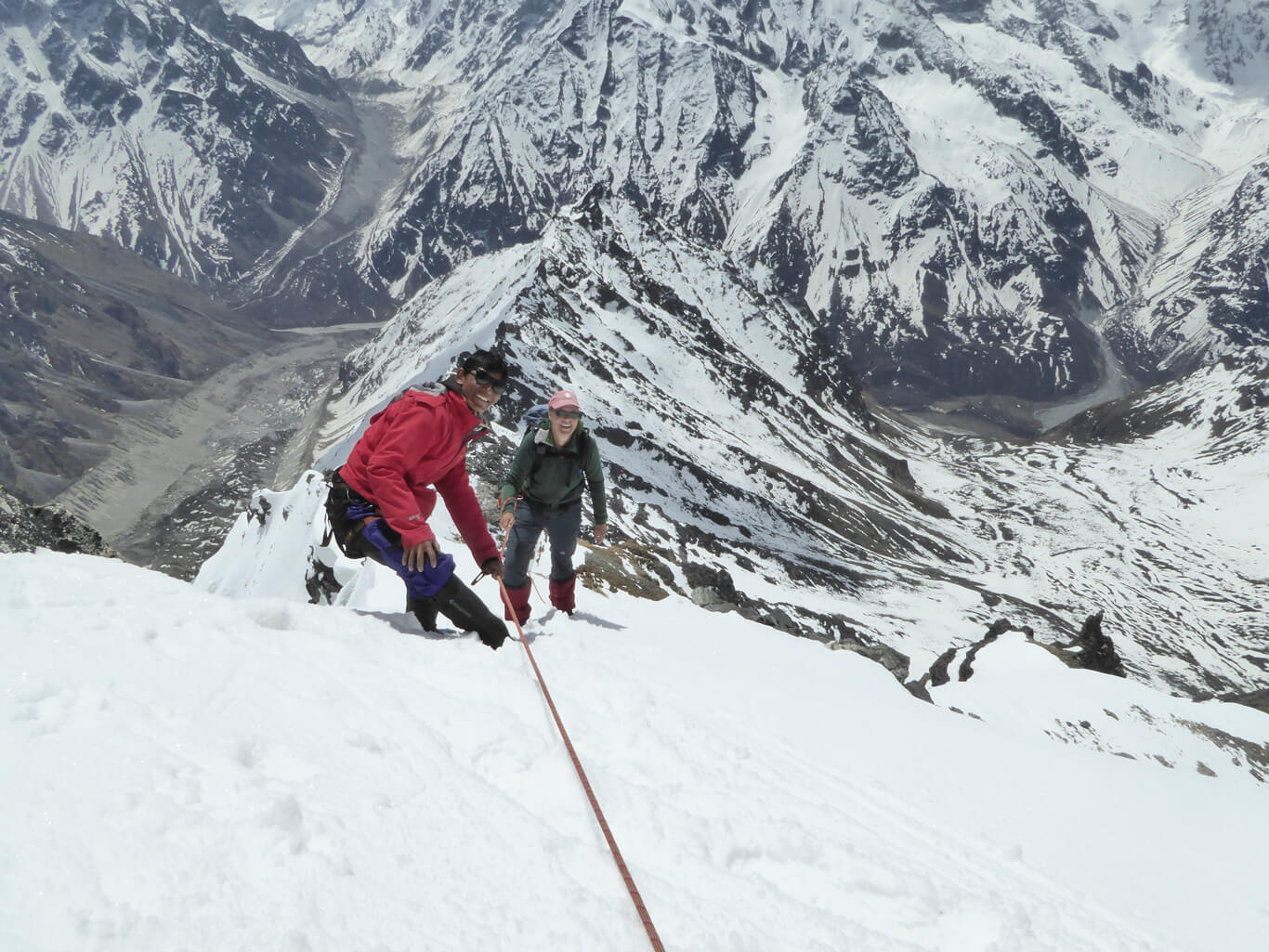
How to get it?
You will journey north from Kathmandu Valley to the enchanting Langtang Valley to reach the top. The Yala Peak adventure begins at the Langtang Region’s entrance and travels through the distinctive Tamang and Sherpa settlements, rich foliage, and stunning valleys of Langtang National Park. Moreover, you will transmit through several major checkpoints on the Langtang Valley trek and the seismic region.
At the peak Peakala Peak, your odyssey will end. You’ll have superb coverage of the surrounding Langtang Region. Mountains like Manaslu, Dhaulagiri, and others look anywhere near and clear from the viewpoint. You’ll also have to manage the region’s harsh weather. Due to the extensive, rugged, bumpy scrambling route, you probably encounter difficulties. Yala Peal, on the other extreme, should be a pleasurable climb.
Best Season to Climb
Likewise, April to May and October to November are two well-known seasons for exploring the Himalayas. Yala Pass Trek is no different in comparison to others. Ascending the mountain is usually accomplished in the autumn season.
Moreover, there will be less frost, less precipitation, abundant sun, and crisp and fresh weather during these two seasons. You will not be lucky enough to experience those elements in the winter and monsoon seasons. Consequently, the fall and spring seasons are optimal.
Chulu West Peak
Chulu West Peak, at 6140m, is located in the western portion of the Annapurna Region. The energy and vibe that this mountain gives to hikers are incredible. The diversity of natural flora and animals draws many hikers to this mountain.
Likewise, this magnificent peak’Peak’sthtaking views will not be forgotten. You’ll be traveling through rugged terrain and high slopes. You’ll need a lot of energy and confidence due to the high height to climb past this mountain. Moreover, this summit is one of the most advantageous for getting a great perspective of the Annapurna ranges, as it may give you a naked view of several mountains.
How to get it?
The peak must hire a private vehicle from Kathmandu to Syanja to reach this majestic peak. Eventually, you will emerge at Manang after crossing through lush tropical rainforests and slopes. Countless routes and lowlands will provide delightful sights within these regions, making your ride extremely intriguing. After arriving in Manang, you will also trek straight to the Chulu west peak.
Calm Himalayas Energy
Moreover, you may encounter brutal weather as you traverse the dusty, dusty terrain. Winter climbing on Chulu West Peak will be problematic. This region feels Tibetan, indicating a more remarkable dry rain shadow area. It’s as though you’re strolling across a strange planet’s area.
The delightful blast of the western breeze will increase your wind directly. Furthermore, the quiet environment will give you the strength to achieve this summit. Overall, the Chulu West Peak hike provides an excellent illustration of Nepal’s western Himalayas.
Peak Climbing Equipment List
Nepal Peak Climbing without the appropriate gear and equipment would be incredibly challenging. Gear also protects you from especially dangerous steep inclines. Similarly, having the right equipment allows you to climb any peak securely.
Likewise, the basis of climbing is the gear and equipment. Additionally, the craggy and steep mountains will put your expertise to the test, and it may be challenging without the proper gear and equipment. The following is a list of the gear and equipment required for Climbing in Nepal.
Climbing Boot
Feet offer you more endurance to climb the mountain’s steep terrain. The lower half of your body handles all the foundation effort needed for climbing. Furthermore, climbing boots are vital for Peak Climbing in Nepal.
Moreover, traction is ensured by the tiny needles that simulate a cone under these boots. It will be highly challenging to climb without footwear. Climbing boots are essential on snowy terrain and steep inclines to sustain grip and make Peak Peakbing in Nepal easier. Furthermore, it protects against infectious diseases caused by sponges, insects, and other tiny invertebrates. As a result, climbing boots are required to ensure a steady and stable trek.
Crampons
This device is incorporated into footwear to control surface adhesion. It optimizes the climb’s efficiency and speed by making it consistent and faultless. Similarly, this is critical equipment for making your smooth Peak Climbing in Nepal.
Descender
As it is commonly known, the figure of eight helps you retain your terrific speed while you descend. This has the power to slow down and balance your movement. It is also formed of aluminum, which gives it a variety of shapes. Similarly, maintaining equilibrium between your body and the surface is critical for continuous downslopes. Peak Climbing in Nepal is also one of the primary important things.
Ascender
This equipment is ideal for peak climbing in Nepal. Ascender is firmly connected to a rope, which makes climbing easier. It allows you to stay in one position when Peak Peakbing is in Nepal. Moreover, Ascender keeps you safe from steep uphill slopes during Climbing in Nepal.
Carabiner
A carabiner is a small item that attaches one piece of equipment to another. It is also critical to hang your belongings below the waist. It also links ropes and bags to the body, making Climbing in Nepal more convenient.
Ice ax
This kit is essential if you are going on an adventurous expedition. Similarly, the ice walls and surfaces may sometimes cause you some discomfort. You may use an ice ax for this, widely used during Peak Climbing in Nepal. While traveling to the upper Himalayas, you will frequently see snowy curves and slopes. This ice ax is essential for ripping it off the icebox and surface and for your safety.
Helmet (UIAA Test)
The head is the most crucial component of your body. While Nepal Peak Climbing, you should be more concerned about your safety. Furthermore, UIAA-approved helmets are available to keep you safe from accidents and other hazards.
Likewise, In the Himalayas’ upper reaches, stones fall at random. You may also tumble from the steep hills at times. So, to protect your head and avoid catastrophic harm, you must wear this helmet during Nepal Peak Climbing.
Harness
This sort of one-of-a-kind gear protects you from rope friction and other hazards. It may also aid the ropes in a variety of ways. Likewise, Harness performs better while Mountaineering in Nepal when connected to the thigh.
Prusik Rope
This is essential for linking different knots on climbing equipment. It is also beneficial for climbing uphill and downhill. Moreover, it is also used to help climbers navigate rugged and steep terrains more easily while Nepal expeditions. This rope may also rescue and assist beginners during difficult uphill climbing.
Climbing Rope
While climbing, a climbing rope is vital. Moreover, climbing ropes are available in many styles and assist you in ascending and pulling someone uphill. Likewise, there are circumstances where you’ll have to confront a vertical wall, such as a hill since this climbing rope is essential.
Snow Bar
While hauling up someone or any big bag loads, the snow bar adjusts the rope on the surface. Moreover, it stabilizes the rope by providing ideal balance from the ground’s surface.
Ice Screws
These screws are critical for grabbing anything substantial while descending or walking upwards. Likewise, it helps you balance while climbing by putting weight on that firm surface. As a result, it provides support to help you balance your body when you can’t control it while Nepal Peak Climbing.
Breaking Belay Device
This gadget aids in the gradual descent utilizing rope. If you fall low, the apparatus will automatically slow down the rope until it comes to a complete halt.
Trekking poles
Trekking poles provide complete body support from the ground. Forever These poles are also used to determine whether there are any steep hills and to give steady and balanced support during Peak Climbing in Nepal. Furthermore, climbers frequently utilize trekking poles when trekking.
Slings
Sling assists in attaching the climbing equipment. Likewise, it will also assist you in hanging essential items such as bag packs and the like.
Altimeter
This instrument is crucial since it is used to determine height and elevation. Moreover, this instrument will be the most useful in determining how much altitude you are at.
U-Lock
This is also vital equipment for creating space between ropes and phases by shutting them out.
Gloves
Gloves are essential equipment for climbing in the Himalayas. It is not only utilized for climbing, but it also protects you from cold and frostbite. Moreover, Gloves also protect you from dangerously steep slopes and the Rocky Mountains. It also protects you from sharp pebbles and stones, making Climbing in Nepal more convenient.
Sleeping Bags
An essential item is a sleeping bag. You’ll need a good night’s sleep on cold evenings to keep your energies up for the following excursion. Moreover, it offers a comfortable night’s sleep, helping your body feel healthier, one of the best things while Climbing in Nepal.
Oxygen
Altitude sickness might be a massive issue for you. Thus oxygen is essential equipment to avoid such a severe event. It’s a critical component to take with you While Climbing in Nepal.
Lotions for insect bite prevention
Climbing in Nepal during the monsoon season will be a little tricky. The number of insects and leeches in this area is exceptionally high. As a result, you should bring some lotions and creams to avoid illness from their bite.
Best Season for Peak Climbing in Nepal
Peak climbing in Nepal is most enjoyable during the following four seasons. The best seasons for peak climbing are autumn, spring, summer, and winter. Each season has its months, weather patterns, and climatic shifts. Every season has its own set of difficulties during Climbing in Nepal. Throughout the season, thousands of tourists love Peak Peakbing in Nepal. Moreover, there are a few seasons and months when Nepal Peak Climbing is particularly pleasurable.
Autumn Season
You will have a lot of fun climbing in Nepal throughout these months. The sight of the national flower, the Rhododendron, will take your breath away. Likewise, this season includes the months of November, October, and December. These seasons are pretty cold, and winter may last for several months.
Similarly, the temperature in your environment will be favorable to you. With temperatures around 10 degrees, you could efficiently complete a 5-hour trek daily. In addition, it will no longer be chilly enough to require a jacket. It will be more appropriate to wear shorts and a half-vest, making your Climbing in Nepal easier.
The temperature is below 7 degrees at night. At night, mists and fog don’t appear to bother anyone. Similarly, there will be many fewer clouds this season. You may gaze up at the stars with the clear evening view. Overall, the Autumn Season is the best period for climbing in Nepal.
Spring Season
Months like May, April, and March fall within this category. This three-month expedition will be the best during Peak Climbing in Nepal. As a result, spring only begins to restore plants and awareness following a drought in March. You will be astounded at the swarms of plants that cover the hillsides.
A lovely spring day will see temperatures around 20 degrees Celsius, making your Nepal expeditions more Satisfying. Someday, skimpy attire like a half-vest and shorts will suffice. The temperature dips to 5 degrees Celsius as night falls. This is how spring feels in terms of temperature during Climbing in Nepal. On your journey, you can also encounter some light rain. When climbing, the moderate rain might help you feel more energized.
Furthermore, the spectacular mountain vistas while Climbing in Nepal will leave you speechless. You will also feel the strength of the region’s fantastic environment. This spring is another excellent time to go peak climbing. This season offers breathtaking views of mountains and woods. The breathtaking view of the majestic Himalayas will envelop you in bliss.
Furthermore, the satisfaction you experience in Peak Climbing in Nepal during the season is nostalgic. The scent of flowers and the environment’s air will raise you to the next level. This season, the energy that nature provides you will be incredible.
Summer Season
The climate is constantly changing during the summer season. The temperature rises around 25 degrees Celsius at higher elevations. Likewise, it dips down ten levels at night, providing a clear view of the stars. Furthermore, the weather will become apparent just after the rain, allowing you to appreciate the outdoors fully. Your expedition will be filled with excitement and adventure throughout these months. Your climbing skills will be tested on treacherous paths and slick slopes.
Similarly, you will touch the clouds as you scale the great difficulties. The leaves will refresh and chill you off, making your Climbing in Nepal perfect. Furthermore, the walk will be much more enjoyable with a great breeze, a beautiful blue sky, and mild showers. Summer is a relatively mild season for peak climbing.
Winter Season
During the winter, temperatures will range from 1 to 0 degrees Celsius during the day and -7 degrees Celsius at night. Similarly, you cannot even imagine remaining one night without adequate housing. Furthermore, thick and woolen clothing is needed throughout the season. Climbers will be required to check in for the next three months. Also, excessive blood might make you feel ill.
You could also experience spectacular snowfall while walking. It’ll be a fantastic adventure. Likewise, it will take longer to get to the desired location. Due to the cloudy and low visibility conditions, you cannot see the breathtaking Himalayan scenery. Therefore winter season will be a little bit difficult for peak climbing.
Nepal Peak Climbing FAQs
Is Climbing in Nepal safe?
Nepal Peak Climbing is safe if you do it in the right season. Locals are charming and helpful and will always be willing to assist you in an emergency. Similarly, because Nepal is a peaceful country, there is no fear of invasion. Moreover, Guides and porters will also be on hand to assist you in any scenario. Climbing equipment and gear can also help you in a variety of ways. Also, because the national park is nicely designed, you won’t have to worry about animal attacks. Peak climbing in Nepal is, in general, reasonably safe.
In Nepal, how arduous is Climbing peaks in Nepal?
The climber’s level of experience determines the difficulty of Mountaineering in Nepal. Furthermore, it depends on each specific mountain’s season and difficulty factor. Conversely, the preponderance of Nepal’s peaks rises above 6000 meters above sea level. Climbing Nepal’s peaks will also be more accessible with sufficient training and experience.
When is the best time to climb in Nepal?
The spring and autumn seasons are the best times to climb a peak in Nepal. During this season, you will get a lovely view of the Himalayas without any weather hurdles. Moreover, the clear view of the mountains and surroundings will amaze you. You will feel worth climbing during these two seasons.
Do I need any documents and a permit while Climbing in Nepal?
It would help to buy multiple peak permits before Peak Climbing in Nepal. Likewise, you must have to pay National Park fees as well. The documents like your id and passport are essential to make you valid for Climbing in Nepal. The permit fees differ with every season.
Are guides and Porters Compulsory?
If you are an experienced climber, you need no guides and porters. But somehow, guides and porters are compulsory. The steep terrain and rapidly changing weather conditions might be a big problem. You will get excellent help from guides and porters. So you must hire licensed guides and porters before Peak Climbing in Nepal.
Will it be challenging to climb for beginners in Nepal?
Yes, climbing in Nepal may be challenging for those unfamiliar with these mountains. Similarly, adequate training and exercise are required before attempting to climb a peak in Nepal. Furthermore, getting some expertise and knowledge regarding Climbing in Nepal will make reaching all of Nepal’s mountains easier.
Do I need pieces of equipment during peak climbing in Nepal?
Climbing in Nepal is impossible without the correct equipment. Every piece of equipment has a unique characteristic that aids you in challenging situations. As a result, to improve your climbing, you must carry equipment at all costs. You can buy types of equipment or rent them from Kathmandu and Pokhara.
How many days does it take to Climbing in Nepal?
It all depends on the peak Peakre climbing. Every peak in Peaka unique itinerary with branching routes. Similarly, each peak climb in Nepal takes 8 to 15 days.
Is climbing solo better?
It depends on whether or not you are a seasoned climber. Moreover, Peak Climbing in Nepal will be a little more difficult for experienced climbers. As a result, solo climbing will be more complicated. Therefore you should climb in a group or with friends to make it more adventurous and exciting.
Any information on the maximum weight allowed while climbing in Nepal?
You can carry 2 to 3 kg of weight in a rucksack. There will also be guides and porters to assist you.
What about communication and networking while Climbing in Nepal?
Local SIM cards, which cost roughly $1, will be required for communication. Moreover, you can also access internet service by purchasing local SIM cards.
Is there going to be more excellent lodging on the expedition?
Yes, in the low elevation, the lodging will be excellent. However, the accommodations will take on a more traditional Nepali feel as you go in altitude—the greater the height, the less luxurious services. Conversely, accommodation services at lower elevations will be more satisfying due to the variety of options available.
Do I need Travel Insurance for Peak Climbing in Nepal?
While Nepal Peak Climbing, you will undoubtedly require travel insurance. The majority of the mountains and Himalayas in this area are also tricky. The steep slopes and high elevation are not to be underestimated. Similarly, issues such as altitude sickness may emerge. As a result, insurance is required for your safe journey; you must purchase full coverage travel insurance, including emergency rescue, physical hospital bills, and deportation.
Is There a Risk of Altitude Sickness?
Of course, while ascending a peak in Nepal, there is a substantial risk of altitude sickness. Furthermore, it would help if you were prepared before Nepal Peak Climbing, including medical supplies. Additionally, regular exercise and physical health will aid you. To avoid dehydration, you must have bottles of water with you.
Is it obligatory to tip guides and porters?
Tipping guides and porters are not obligatory. You have the option of tipping or not tipping. Likewise, you may easily tip them if they provide excellent service.
The best experience we had with Peregrine was the whole tour of the Annapurna Base Camp Trek was tailor-made for our requirements; all our requests were reviewed, discussed, and accepted and, in some instances, with a better recommendation.
More Reviews




